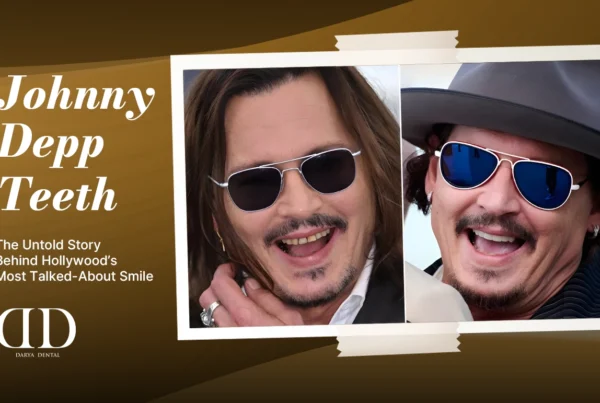
Teeth grinding at night, medically known as nocturnal bruxism, is a common condition where individuals clench or grind their teeth during sleep. This involuntary habit can lead to dental damage, jaw pain, and other health issues if left unaddressed. While occasional teeth grinding may not be harmful, chronic bruxism requires attention to prevent long-term complications. This article explores the causes of nocturnal bruxism, its effects, and effective solutions to manage or prevent it, offering insights for those seeking relief.
Understanding Nocturnal Bruxism
Bruxism is classified into two types: awake (diurnal) and sleep (nocturnal) bruxism. Nocturnal bruxism occurs during sleep, often without the individual’s awareness, making it harder to control. According to the American Academy of Sleep Medicine, approximately 10% of adults experience sleep bruxism, though the prevalence may be higher due to underdiagnosis. Symptoms include worn teeth, jaw soreness, headaches, and disturbed sleep, often noticed by a partner hearing grinding noises.
Bruxism can range from mild to severe, with severe cases causing significant dental and health issues. Understanding its causes is key to finding effective solutions, as the condition often stems from a combination of physical, psychological, and lifestyle factors.
Causes of Nocturnal Bruxism
1. Stress and Anxiety
Psychological stress is a leading cause of bruxism. The pressures of work, relationships, or financial concerns can manifest physically during sleep, as the brain processes stress through muscle activity. A 2018 study in the Journal of Oral Rehabilitation found a strong correlation between self-reported stress and bruxism severity in adults. Anxiety disorders, such as generalized anxiety or post-traumatic stress disorder (PTSD), can also trigger grinding by heightening muscle tension.
2. Sleep Disorders
Bruxism is closely linked to sleep disorders, particularly sleep apnea, a condition where breathing repeatedly stops and starts during sleep. The brain may trigger jaw clenching to reopen airways, leading to grinding. A 2020 study in Sleep Medicine Reviews noted that up to 31% of individuals with obstructive sleep apnea also exhibit bruxism. Other sleep issues, like insomnia or restless leg syndrome, may exacerbate the condition.
3. Dental and Bite Issues
Misaligned teeth (malocclusion) or an improper bite can contribute to bruxism. When teeth don’t align properly, the jaw may grind or clench to find a comfortable position, especially during sleep. Missing teeth, poorly fitted dental restorations, or temporomandibular joint (TMJ) disorders can also play a role. Dentists, such as those at Darya Dental Clinic, often assess bite alignment during examinations to identify these factors.
4. Lifestyle Factors
Certain habits increase the likelihood of bruxism:
-
Caffeine and Alcohol: Excessive consumption, especially before bed, can stimulate the nervous system, increasing muscle activity. A 2019 study in Sleep found that alcohol consumption doubled the risk of bruxism episodes.
-
Smoking: Nicotine, a stimulant, can heighten arousal during sleep, contributing to grinding.
-
Medications: Some antidepressants (e.g., SSRIs) and antipsychotics list bruxism as a side effect, as they alter neurotransmitter activity affecting muscle control.
5. Genetics
There’s evidence suggesting a genetic component to bruxism. A 2016 study in the Journal of Dental Research found that individuals with a family history of bruxism are more likely to develop it, indicating a hereditary predisposition. However, environmental factors like stress often amplify this tendency.
Effects of Nocturnal Bruxism
Untreated bruxism can lead to a range of complications:
-
Dental Damage: Grinding wears down enamel, leading to flattened, chipped, or fractured teeth. Over time, this increases sensitivity and cavity risk.
-
Jaw Pain and TMJ Disorders: Chronic clenching strains the jaw muscles and TMJ, causing pain, clicking, or limited jaw movement.
-
Headaches and Facial Pain: Morning headaches, particularly around the temples, are common, as are earaches or facial soreness.
-
Sleep Disruption: Grinding can disturb sleep for both the individual and their partner, leading to fatigue or irritability.
-
Gum Recession: Excessive force on teeth can damage gums, increasing the risk of periodontal disease.
These effects highlight the importance of early intervention to prevent long-term damage and improve quality of life.
Diagnosing Bruxism
Diagnosing nocturnal bruxism typically involves a combination of self-reported symptoms, partner observations, and professional evaluation. Common signs include:
-
Waking with jaw soreness or headaches.
-
Worn or damaged teeth noticed during dental exams.
-
Grinding noises reported by a partner.
A dentist will examine your teeth for wear patterns and assess jaw function. In some cases, a sleep study (polysomnography) may be recommended to confirm bruxism and rule out related disorders like sleep apnea. Wearable devices or intraoral sensors are emerging tools that can monitor grinding activity during sleep.
Solutions for Nocturnal Bruxism
Managing bruxism involves addressing its underlying causes and protecting teeth from damage. Solutions range from dental interventions to lifestyle changes and medical treatments.
1. Dental Interventions
-
Mouthguards or Nightguards: Custom-fitted by a dentist, these oral appliances protect teeth by creating a barrier between the upper and lower jaws. They don’t stop grinding but prevent enamel wear and reduce jaw strain. Over-the-counter options exist but may fit poorly, increasing discomfort.
-
Dental Corrections: If misaligned teeth or restorations contribute to bruxism, treatments like orthodontics, crowns, or bite adjustments can help. Regular dental checkups ensure early detection of these issues.
-
Botox Injections: For severe cases, Botox can be injected into the jaw muscles to reduce clenching intensity. A 2021 study in Neurology showed Botox reduced bruxism symptoms in 70% of participants, though it’s typically a last resort.
2. Stress Management
Since stress is a primary trigger, relaxation techniques can significantly reduce bruxism:
-
Cognitive Behavioral Therapy (CBT): CBT helps manage stress and anxiety, addressing psychological triggers. A 2020 trial in Journal of Behavioral Medicine found CBT reduced bruxism episodes by 40% in high-stress individuals.
-
Mindfulness and Meditation: Practicing mindfulness before bed can calm the nervous system. Apps or guided sessions can be effective.
-
Exercise: Regular physical activity reduces stress hormones, improving sleep quality and reducing grinding.
3. Lifestyle Adjustments
-
Limit Stimulants: Reduce caffeine, alcohol, and nicotine, especially in the evening. Opt for herbal teas or water to promote relaxation.
-
Sleep Hygiene: Maintain a consistent sleep schedule, avoid screens before bed, and create a calming bedroom environment. These habits improve sleep quality and reduce bruxism triggers.
-
Dietary Changes: Avoid hard or chewy foods that strain the jaw, especially before bedtime.
4. Medical Treatments
If bruxism is linked to a sleep disorder or medication, consult a physician. For sleep apnea, a continuous positive airway pressure (CPAP) machine may resolve grinding by stabilizing breathing. Adjusting medications under medical supervision can also help if they’re contributing to bruxism.
5. At-Home Remedies
-
Warm Compresses: Applying a warm towel to the jaw before bed relaxes muscles and reduces clenching.
-
Jaw Exercises: Gentle stretching or massage of the jaw can alleviate tension. A physical therapist or dentist can recommend specific techniques.
-
Hydration: Staying hydrated supports saliva production, which protects teeth and reduces irritation from grinding.
Preventing Bruxism
Prevention focuses on minimizing risk factors:
-
Schedule regular dental visits to monitor tooth wear and jaw health.
-
Practice stress-reduction techniques daily, such as yoga or journaling.
-
Avoid chewing gum or hard objects, which can overwork jaw muscles.
-
Stay aware of clenching during the day, as awake bruxism can carry over to sleep.
When to Seek Professional Help
Consult a dentist or doctor if you experience:
-
Persistent jaw pain, headaches, or earaches.
-
Visible tooth damage or increased sensitivity.
-
Sleep disruption affecting daily life.
-
Symptoms of sleep apnea, such as loud snoring or gasping.
Early intervention prevents complications and improves outcomes. A dentist can tailor a treatment plan based on your symptoms and lifestyle.
Conclusion
Nocturnal bruxism is a multifaceted condition influenced by stress, sleep disorders, dental issues, and lifestyle factors. While it can lead to significant dental and health problems, effective solutions like mouthguards, stress management, and lifestyle changes can mitigate its impact. By understanding the causes and working with dental and medical professionals, individuals can protect their teeth and improve their quality of life. Addressing bruxism early ensures a healthier smile and better overall well-being.
Frequently Asked Questions (FAQs)
-
What are the main signs of nocturnal bruxism?
Common signs include jaw soreness, morning headaches, worn or chipped teeth, and grinding noises during sleep reported by a partner. -
Can stress alone cause teeth grinding at night?
Yes, stress is a major trigger for bruxism, as it increases muscle tension during sleep, but other factors like sleep disorders or dental issues may also contribute. -
Are over-the-counter mouthguards effective for bruxism?
Over-the-counter mouthguards may offer some protection but are less effective than custom-fitted nightguards from a dentist, as they may not fit properly. -
Can bruxism go away on its own?
Mild bruxism may resolve if triggers like stress or lifestyle habits are addressed, but chronic cases often require professional intervention to prevent damage. -
How is bruxism diagnosed?
A dentist diagnoses bruxism through a clinical exam, assessing tooth wear and jaw function, sometimes supplemented by a sleep study to confirm nocturnal grinding.





